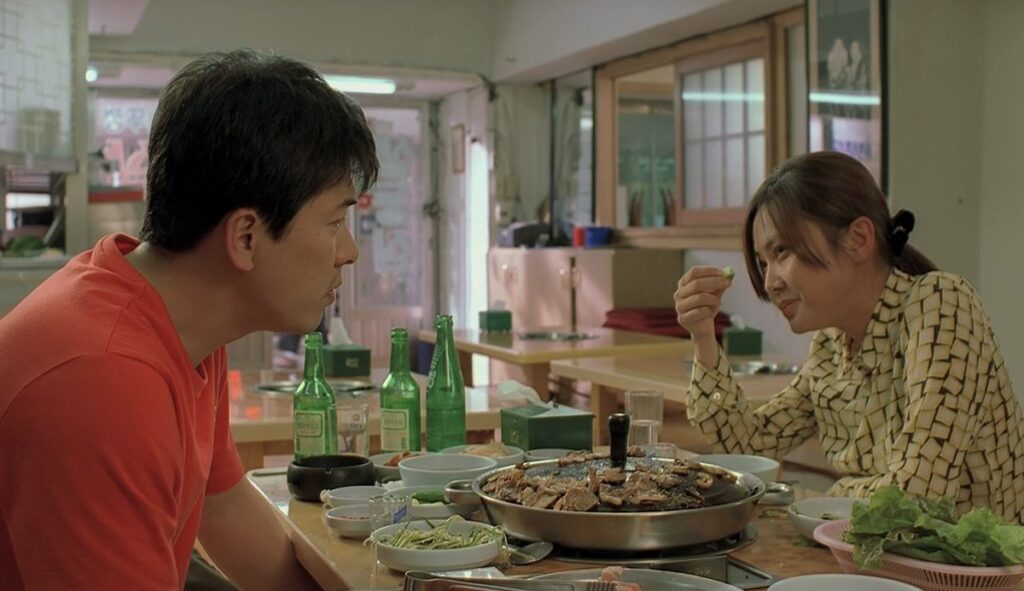In Hong Sang-soo’s 2002 film On the Occasion of Remembering the Turning Gate, a young actor, Gyung-soo (Kim Sang-kyung), goes on vacation to visit an old friend; he hangs out and drinks with his buddy and the two take a ferry trip to, but do not actually visit, the Turning Gate. The friends meet a pretty dance instructor, Myung-sook (Ye Ji-won), whom Gyung-soo hooks-up with, but refuses to say he loves, and things end badly — especially once he realizes that his friend also has a thing for Myung-sook. So Gyung-soo hops a train out of town, having failed as both a friend and a lover. On the train, he meets a new woman, Seon-young (Choo Sang-mi), who he instantly falls for; he follows her back to her house and awkwardly attempts to talk to her, but is rebuffed by her protective family. Eventually, the two get together, but Gyung-soo soon learns that Seon-young is married. Having fallen in love, Gyung-soo schemes to break-up the marriage, but ultimately he thinks better of it and, standing outside her door in the pouring rain, makes the decision to walk away. The point of this whole narrative is clearer through an understanding of the legend of the “Turning Gate”: A Chinese princess is loved by a commoner, which enrages the Emperor, who beheads her paramour. The man is then reincarnated as a snake and wraps his body tightly around the princess, slowly killing her. A priest suggests that the princess goes to Chungpyung Temple in Korea. She goes inside the temple to ask for food, and tells the snake to wait outside for her, but she never comes out — and so the snake goes in after her. Suddenly, it begins to rain; scared, the snake runs away. The temple gate from which the snake turned back becomes known as the Turning Gate.
The ability to recreate the world, to be open enough to allow fiction to infiltrate and change memories and experiences, is at the heart of Hong’s mature work.
The second half of Hong Sang-soo’s film is more than just an inversion of the first half. The plot doesn’t just replay itself with some major and minor differences, but rather this new plot is formed from the first one in cosmically inexplicable ways (e.g., a note that Sun-young leaves for Gyung-soo, after the two spend the night together, repeats the language of a note that Myung-sook had left for him). It’s possible that the rhymes and discordances between the two halves are natural coincidences, and that Gyung-soo’s ultimate decision to turn away from the married woman simply comes from his remembering the story of the Turning Gate. But perhaps we could go a step further and posit that the second half of the film is more likely Gyung-soo’s reimagining of the initial affair melded with his understanding of the Turning Gate story. In order to make sense and come to terms with romantic disaster, Gyung-soo imagines himself and Myung-sook into a version of the legend. Thus, the second half of Hong’s film is manufactured out of elements from the first. This ability to recreate the world, to be open enough to allow fiction to infiltrate and change memories and experiences, is at the heart of Hong’s mature work; it’s the only device his heroes have for coping with, and escaping from, the cruelties, hypocrisies, and tragedies of modern life.


Comments are closed.